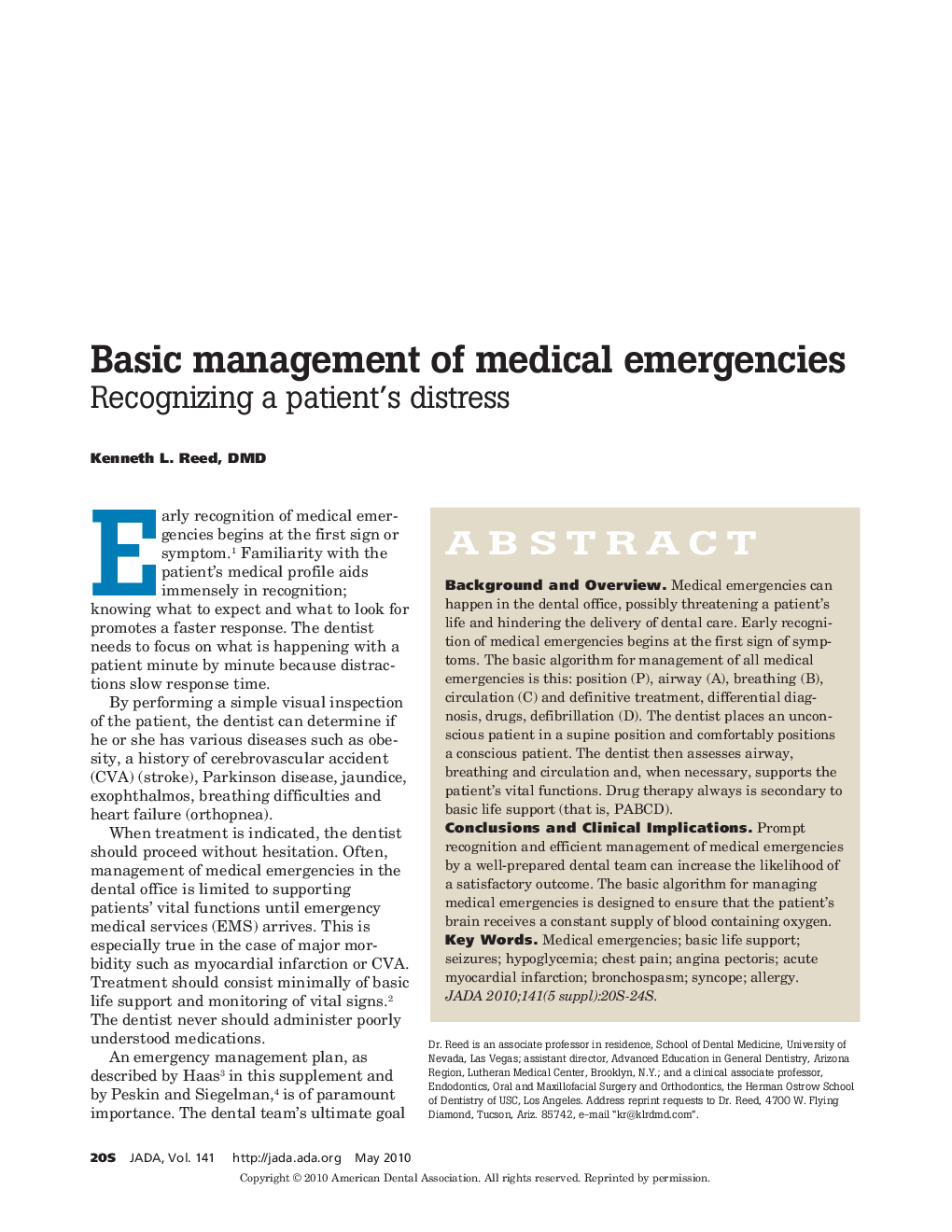| Article ID | Journal | Published Year | Pages | File Type |
|---|---|---|---|---|
| 3138914 | The Journal of the American Dental Association | 2010 | 5 Pages |
ABSTRACTBackground and OverviewMedical emergencies can happen in the dental office, possibly threatening a patient's life and hindering the delivery of dental care. Early recognition of medical emergencies begins at the first sign of symptoms. The basic algorithm for management of all medical emergencies is this: position (P), airway (A), breathing (B), circulation (C) and definitive treatment, differential diagnosis, drugs, defibrillation (D). The dentist places an unconscious patient in a supine position and comfortably positions a conscious patient. The dentist then assesses airway, breathing and circulation and, when necessary, supports the patient's vital functions. Drug therapy always is secondary to basic life support (that is, PABCD).Conclusions and Clinical ImplicationsPrompt recognition and efficient management of medical emergencies by a well-prepared dental team can increase the likelihood of a satisfactory outcome. The basic algorithm for managing medical emergencies is designed to ensure that the patient's brain receives a constant supply of blood containing oxygen.
